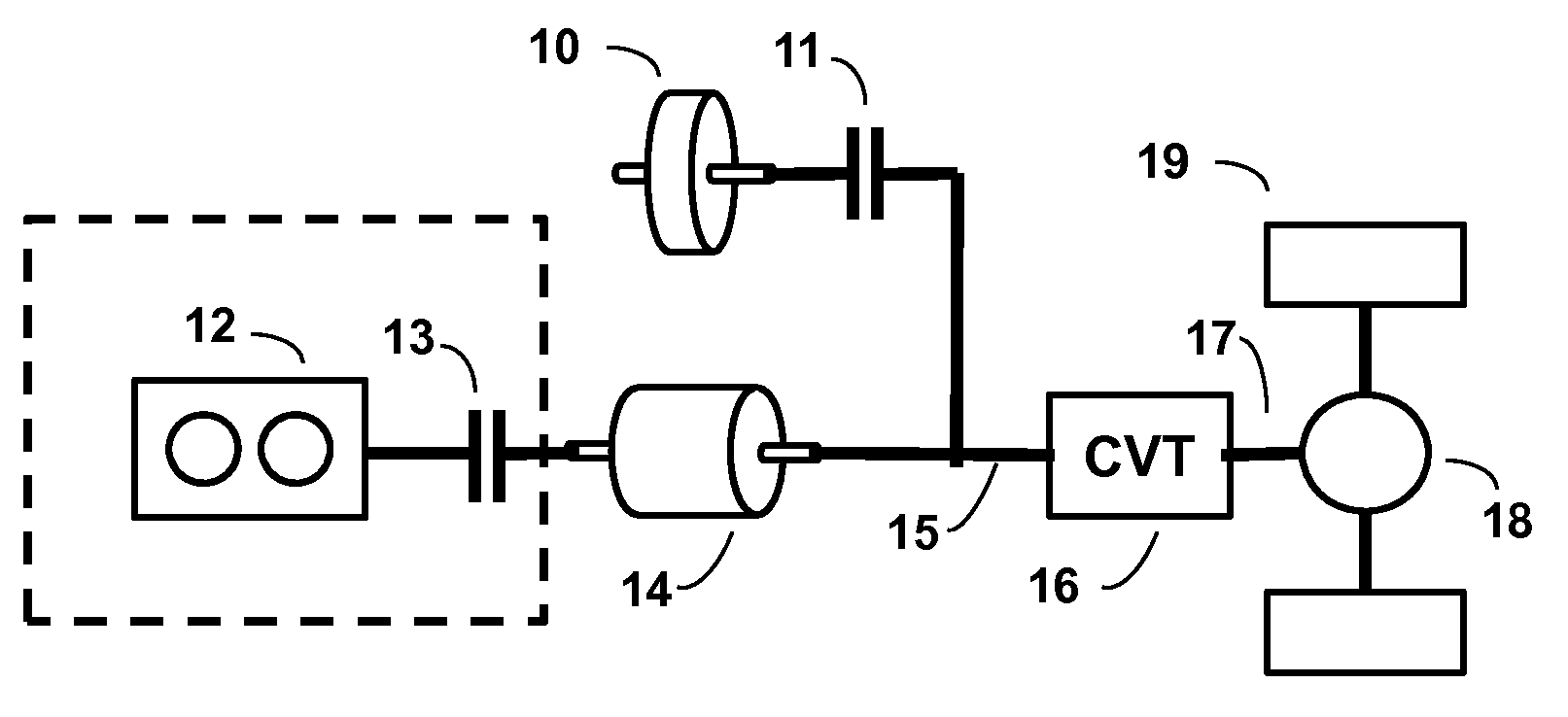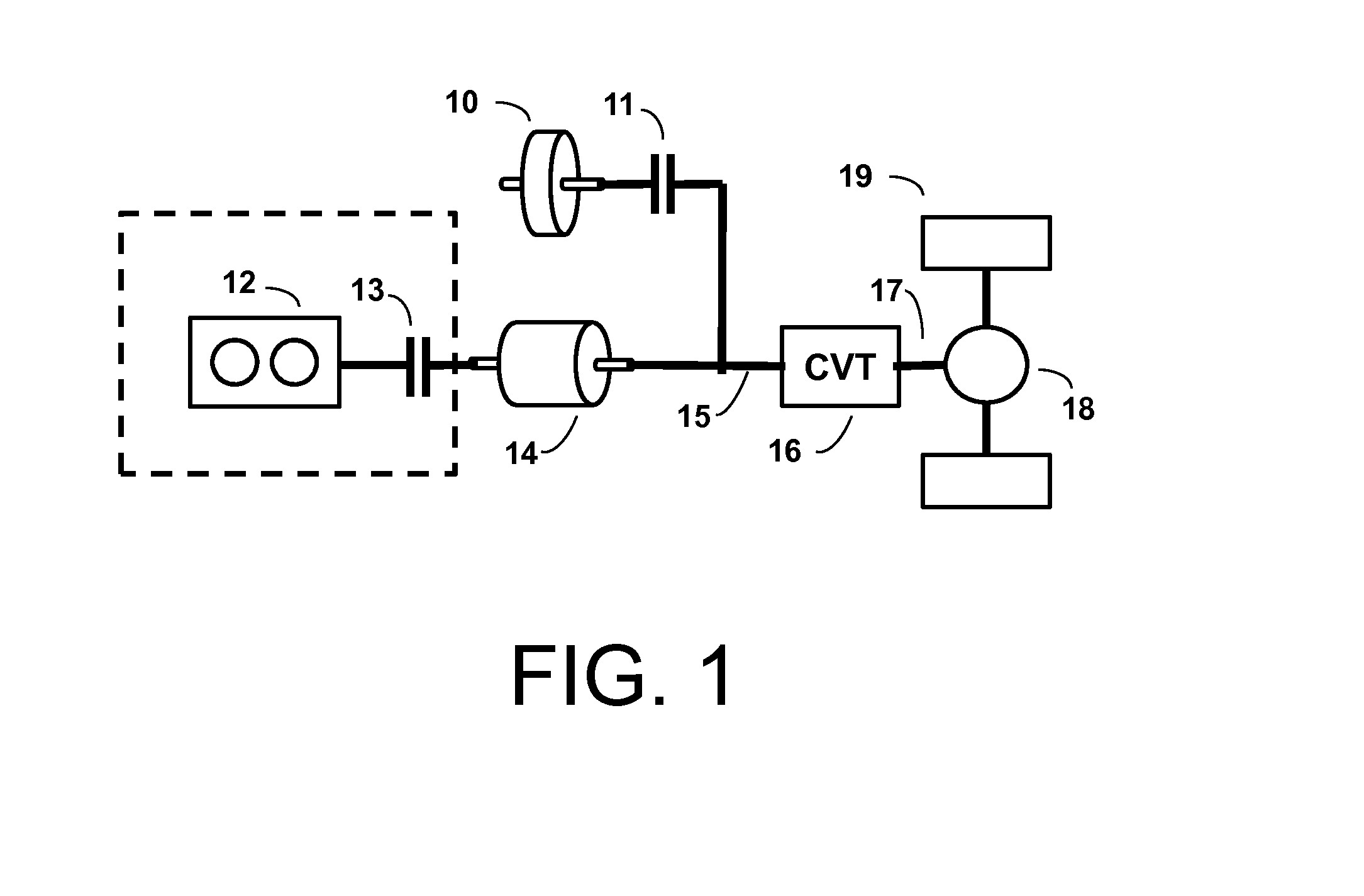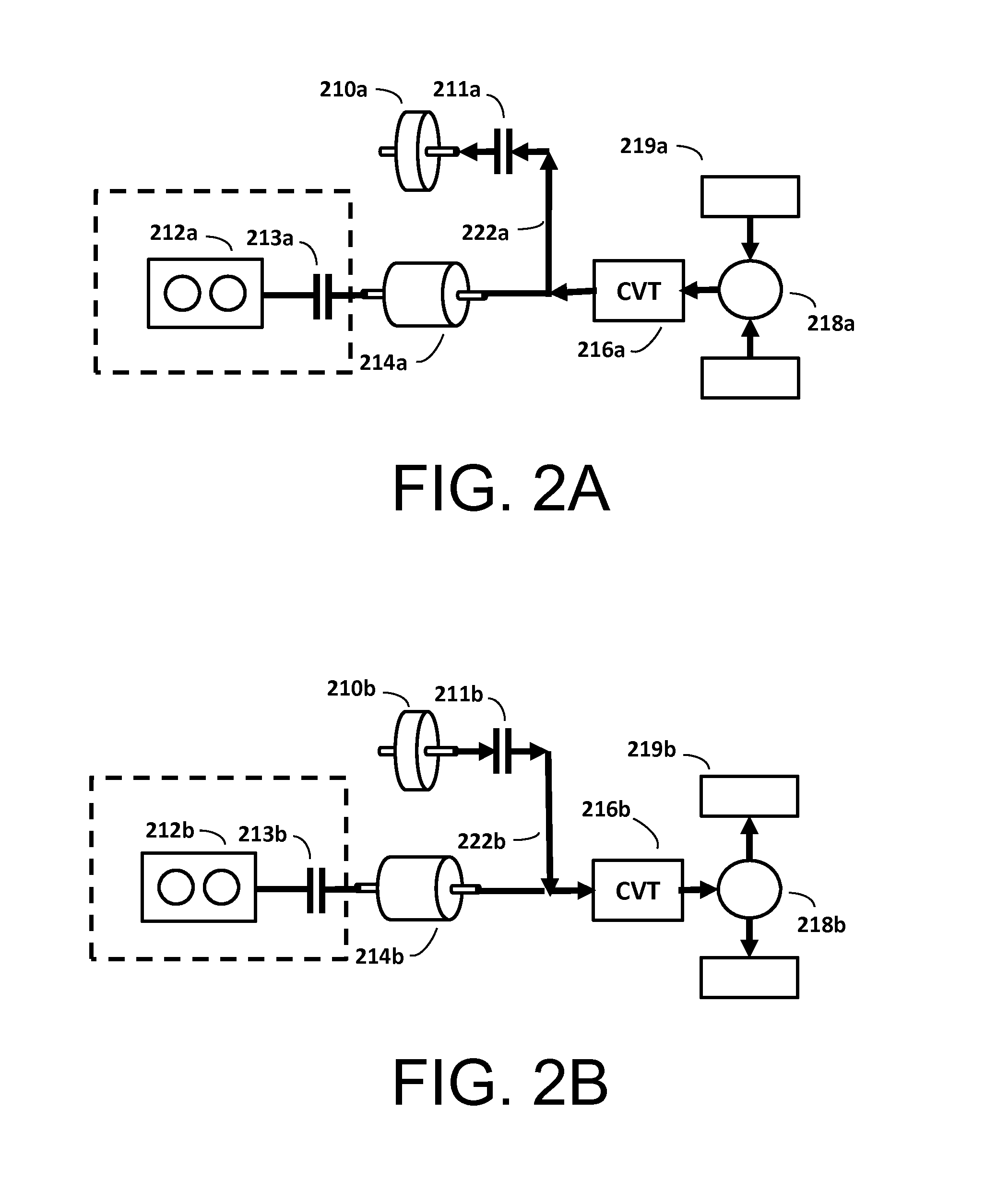Optimized de-inertia control method for kinetic hybrids
a kinetic hybrid and control method technology, applied in the direction of propulsion parts, instruments, transportation and packaging, etc., can solve the problems of low overall drive efficiency, low efficiency of flywheel control, and waste of close to half of energy, so as to optimize efficiency, optimize efficiency, and optimize the effect of vehicle efficiency without sacrificing performan
- Summary
- Abstract
- Description
- Claims
- Application Information
AI Technical Summary
Benefits of technology
Problems solved by technology
Method used
Image
Examples
Embodiment Construction
[0021]The present invention is described herein with reference to the drawings. In the drawings, like reference numerals represent like elements.
[0022]FIG. 1 represents a kinetic hybrid powertrain. The primary power source may be an internal combustion (IC) engine 12 or a traction motor / generator 14, or both may be present in a kinetic hybrid powertrain. In easily anticipated variations the engine 12 may be a turbine engine, or the primary power source may be considered to be some combination of one or more motors with at least one engine. If there is both an engine 12 and a motor 14 in the same powertrain, the motor 14 may be a through shaft motor and there may be an engine clutch 13 for coupling / decoupling the engine 12. The primary power source(s) is coupled to the input shaft 15 of a continuously variable transmission (CVT) 16, as is the flywheel 10 through the flywheel clutch 11, and the output shaft 17 of the CVT 16 is coupled to the final drive 18, which is connected to the v...
PUM
 Login to View More
Login to View More Abstract
Description
Claims
Application Information
 Login to View More
Login to View More - R&D
- Intellectual Property
- Life Sciences
- Materials
- Tech Scout
- Unparalleled Data Quality
- Higher Quality Content
- 60% Fewer Hallucinations
Browse by: Latest US Patents, China's latest patents, Technical Efficacy Thesaurus, Application Domain, Technology Topic, Popular Technical Reports.
© 2025 PatSnap. All rights reserved.Legal|Privacy policy|Modern Slavery Act Transparency Statement|Sitemap|About US| Contact US: help@patsnap.com



